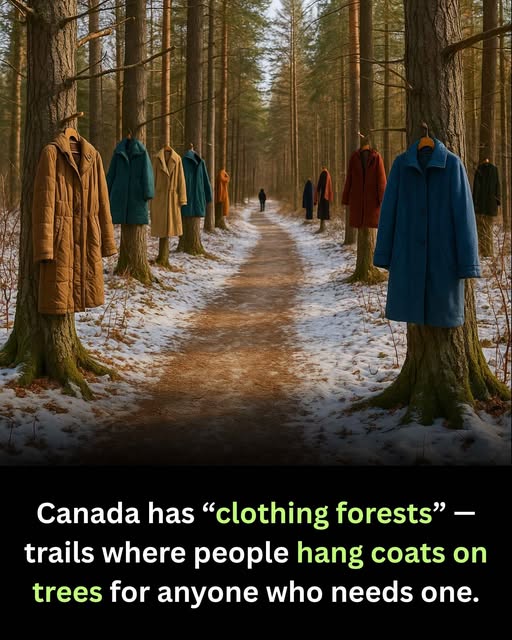When winter’s chill settles across Canada, bringing biting winds and heavy snowfall, warmth becomes more than just a comfort—it becomes a necessity for survival. For many, especially those facing homelessness or financial hardships, access to can be a daily struggle. Yet, amid this harsh season, a quiet, heartfelt movement has blossomed: “clothing forests.” These unique spaces turn ordinary public parks and wooded areas into open-air wardrobes, where
scarves, hats, gloves, and even boots hang on branches, offering free warmth to anyone who needs it. This grassroots initiative, spreading across cities and towns, is a powerful testament to community kindness and collective care.
What Are Clothing Forests? Clothing forests are simple yet profoundly impactful acts of generosity. Instead of the traditional donation drop-off points—bins, shelters, or charity centers—community members hang warm clothing on tree branches or loop items around trunks in accessible outdoor spaces. Often accompanied by notes that say, “If you need it, it’s yours,” these clothing forests operate on trust and dignity, giving people in need the freedom to take what they require without awkwardness, paperwork, or judgment. The idea embraces anonymity, respect, and the pure act of giving, transforming public spaces into safe havens of warmth
The Canadian winter is notoriously unforgiving. For those without stable housing or limited resources, exposure to freezing temperatures can be dangerous, even life-threatening. Access to warm, dry clothing is essential but not always easy to secure. Clothing forests provide immediate, visible, and easy access to these essential items. The trees themselves, standing tall through winter storms and icy conditions, become symbols of endurance, hope, and protection. By decorating their branches with warm garments, communities send a clear message: nobody should have to face the cold alone.
